Introduction:
A framework or methodology for conducting reflective or retrospective analysis is the Driscoll methodology of Reflection. The nursing profession makes extensive use of one of the simplest frameworks for reflective writing. Which was developed by John Driscoll in 1994 and revised twice in 2004 and 2007.
After assessing Terry Borton’s three main stem questions, John Driscoll created the reflection model (1970). The concept is hence frequently referred to as the Borton/Driscoll concept of Reflection. It is the greatest option among reflecting models for novices. Also, it is utilized by nurses and medical professionals worldwide.
Each of the seven phases in the Driscoll Model of Reflection is essential to thorough reflection on a topic.
What is the significance of the Driscoll method of reflection?
There are reasons why the Driscoll method of reflection is essential. There are many elements of this mode. So, you will need to examine it, such as indicators, identifiers, signs & symptoms in patients.
And then taking prompt and taking fast action in the field of nursing is vital. Moreover, reflective practices are key as reflection and feedback enable nurses and midwives to boost their skills, ideas, and knowledge from experimental learning.
Whereas the Drisdol method of reflection is not heavily cited. But then it is widely used in the field of nursing and healthcare.
It is very easy and effective, and there are three stages to this method. You will easily remember and execute these stages in a practical life setting.
Below is the elaboration of this method in nursing.
- In the practice of having an experience in clinical or nursing practice
What? Start with this question and the description of the event. Then you will need to first react, correct, and then take remedial action.
- Focused reflection on every aspect, or just choose from the experience
So, what? Now you will need to examine the event, consider the actions taken in the survey. Then analyze the results and performance.
- Learning from the experience and through the process of reflection
Now what? Lastly, you will need to suggest actions for boosting the results and the performance. Also, you need to decide what methods you can choose to do things differently.
Then take responsive actions and results to prepare for the future.
What areas practice the Driscoll method
The Driscoll method is executed so that it can be used in many events. There are some examples of this model, is reflects learning; it’s not limited to teaching, business, and earth sciences.
As a matter of course, the cases where it can be practiced are those where the workout and expertise will boost the practitioner’s performance.
Further, the reflective model will boost the knowledge. And increase the personal result solely.
Where can be Driscoll method be executed?
This model of reflection can be used via a periodic event in the practice. Further, the reflective practice can be used for the assessment of the learners.
Below are the areas of clinical practice where this model easy be apply.
- Change meetings
- Meetings/teachings/studies
- Change times
- Network sessions or conventions
- Grasping from the articles or journals
- Attending journal club
- Clinical case surveys
- Case conferences
- Letters of criticism
- Critical or major events in the area
- Having an expert portfolio
- Community meetings
- Audits
What are the challenges while using the Driscoll model?
Below are some key challenges in the Driscoll method.
- Time taking- While this model is very easy to use. But then it is very long. And you need to place a lot of effort into the Driscoll method.
Reflective depth- Many people connect with this model. But then it takes a long time to grasp it.
What Are The Driscoll Reflective Model’s Three Stages?
The Driscoll Model of Reflection consists of seven stages that are divided into three parts. The next stages, urge practitioners to reflect on their learning experience. These are each followed by an action.
The Driscoll Model of Reflection is available in three different forms. The original model was created by John Driscoll. It was a development of Terry Borton’s reflective framework, an oversimplified concept created in the 1970s by the American schoolteacher.
The first version of the 1994 Driscoll Model of Reflection was divided into three important phases. The later iterations were more complex, consisting of seven phases, each leading to a place of reflection.
What Is Stage 1?
The three stem questions serve as the basis for the three phases of the original model of reflection. One can define, analyze, reflect, and gain knowledge from their experiences by investigating these three questions and formulating their responses.
The context and conditions of contemplation are defined during the “What” questioning step. It is the initial phase that prepares the ground for methodical reflection. It includes:
succinct justifications for the circumstances, theme, occasion, or incident.
describing in detail what transpired and the actions taken.
How did the reflector react at first? How did the first encounter go?
All this detail regarding the Driscoll Model of Reflection I composed with the help of Nursing Assignment Helpers UK.
Phase Two What Now?
However, the second part of the study delves further into the topic and asks you to consider all the subtleties, traits, responses, and experiences. At this point, the following queries need to be addressed.
How does the evaluator feel and think about the thing that’s being studied?
What were the event’s advantages and disadvantages?
What was the response? Also, what made them respond that way?
Was there any conflict or bias present?
What impact have previous encounters had on feelings and actions?
Was there another person involved? What was their response? Did they respond similarly? Did their responses affect how the evaluator responded?
Phase Three What Happens Next?
During the third phase, decisions are made based on introspection and analysis of the issue or circumstance. This phase looks into the acts that follow as well as the subject’s responses and effects.
The now what step of the what so what no what model of nursing reflection lists the most appropriate and convincing corrective action to be put into practice following careful investigation and assessment. At this stage, the following are common inquiries that are made:
What insights and conclusions have been drawn from analysis and reflection?
Were there any unfavorable results? Was it possible to stop them?
What adjustments could be made to get a better result?
Why Does Nursing Use The Driscoll Reflective Model?
Nursing requires the evaluation of patient indicators, identifiers, indications, and symptoms as well as the early and appropriate administration of care. Reflective practices are essential because they enable nurses and midwives to improve their knowledge, abilities, and concepts gained via experiential learning through reflections and feedback.
In nursing and healthcare, the Driscoll Model of Reflection is still widely utilized, despite not being the most mentioned. It is easy to memorize and apply, and its three parts are straightforward and highly successful. For novices wishing to reflect and gain knowledge from experience, the Driscoll Model of Reflective Writing or Reflection in Nursing is perfect.
What are the Advantages and Disadvantages of Driscoll’s model of reflection?
Like any reflective framework, it offers several benefits that make it effective for nursing students. However, it also has a few drawbacks to consider when applying it in a complex setting.
What are the advantages?
They include:
- Easy to use: It’s straightforward, and a three-question (What, So what, and Now what) framework makes this model very accessible for students and professionals starting with their reflective practices.
- Broad Accessibility Across Contexts: Becuase of its simplicity and easy-to-use framework, it can be applied in nursing healthcare, education, business, and other disciplines, where reflective practices are encouraged.
- Promote Immediate Action: The “Now What” stage pushes users to translate insights into concrete steps. Thus, this makes the model more than just a descriptive reflection.
- Useful for Beginners: Another advantage of this reflective model is that it offers a manageable entry point for those new to reflective writing or inexperienced in structured reflection.
Core Disadvantages
While the reflective model proves to be beneficial, it also has some drawbacks that you need to be aware of. They include:
- Risk of Superficial Reflection: Since the model is so concise, there is a chance that reflection remains at a surface level, rather than deep analytical or critical thinking.
- Limited Emotional & Contextual Depth: The model gives less emphasis to emotions, wider contexts or underlying assumptions as compared to more complex models like Six-stage cycles or Kolb’s Experiential Learning Cycle. Well, this can be a limitation in rich, multi-faceted situations.
- May not suit complex or Multi-layered events: For the complex experiences that requires layered reflection, the simple framework of Driscoll’s model can be a drawback.
- Dependence on Reflector’s Depth of Engagement: The value derived from the model relies heavily on how honestly and deeply the user engages with each question. Additionally, if the reflection is rushed or superficial, the benefit can be reduced.
When to Use the Driscoll’s Model of Reflection?
The Driscoll Model of Reflection is highly adaptable and can be applied across various learning and professional scenarios. Here is when it is most effective:
- After A Clinical Experience: Use the model to reflect on patient interactions, clinical placements or healthcare decisions to identify what went well and what could be improved.
- For Academic Assignments: It is ideal for reflective essays, nursing journals and coursework that requires critical analysis of experiences using a structured framework.
- When Time is Limited: The three-question format allows for quick yet meaningful reflection. Thus, this makes it perfect for busy students or professionals.
- For Beginners in Reflection: It is recommended for nursing and healthcare students who are new to reflective practices and need a simple, easy-to-follow model.
- During Professional Development: The Driscoll’s model of reflection can help practitioners evaluate real-world scenarios and turn lessons learned into actionable steps. This contributes to their improvement
- While learning from mistakes: This is perfect when you are trying to improve. It encourages critical thinking by analyzing outcomes and planning better responses for future situations.
- To enhance self-awareness: It supports emotional and professionla growth by prompting individuals to understand their reactions and thought processes. When self-reflecting, this model can be used.
Hence, the Driscoll Reflection model is best used when you want to extract lessons, gain clarity, and apply them effectively to professional settings or future nursing practices.
What Are The Main Benefits Of The Driscoll Model Of Reflection?
It is simple to use and comprehend.
The model is applicable in all circumstances and environments.
The three steps in the new John Model of Reflection were restructured into seven stages. Which allowed for deeper examination and reflection. The revised model was released in the years 2004 and 2007.
For those just starting off and not sure which model to choose. However, this is a fantastic place to start. Driscoll’s reflective nursing paradigm does, however, have some drawbacks. It is necessary to adhere to the phases and procedures clearly and methodically. It could be challenging to pinpoint the commencement or starting point in real life. In some circumstances, the model might not be the best option. Applying reflective practice to discrete processes might be challenging because it is a continual process.
How Do Writers Apply The Driscoll Model Of Reflection To Their Assignments?
Reflective models have found widespread use in several domains, most notably reflective writing.
John Driscoll’s paradigm of Reflection was developed in 1994, 2004, and 2007 based on Terry Borton’s 1970 reflective writing paradigm of WHAT, SO WHAT, and NOW WHAT. Because of this, the Model of Reflection 2007 is also referred to as the Driscoll/Borton reflective model.




 UK Cities
UK Cities